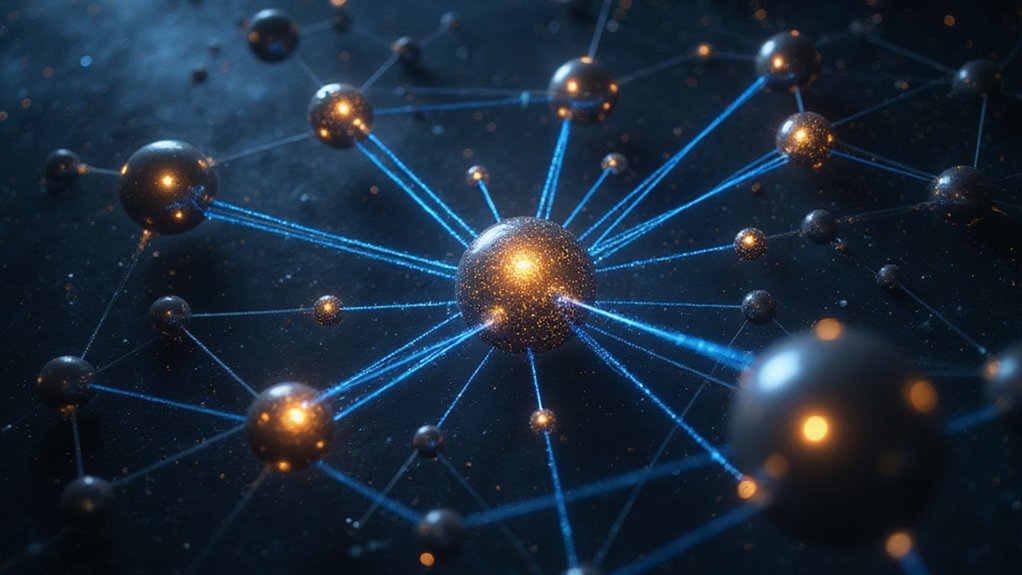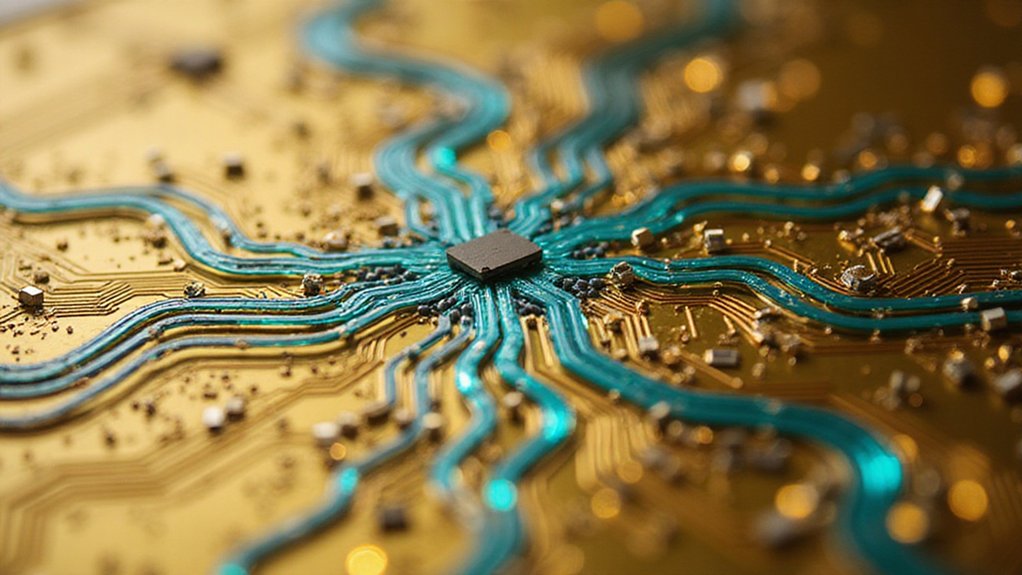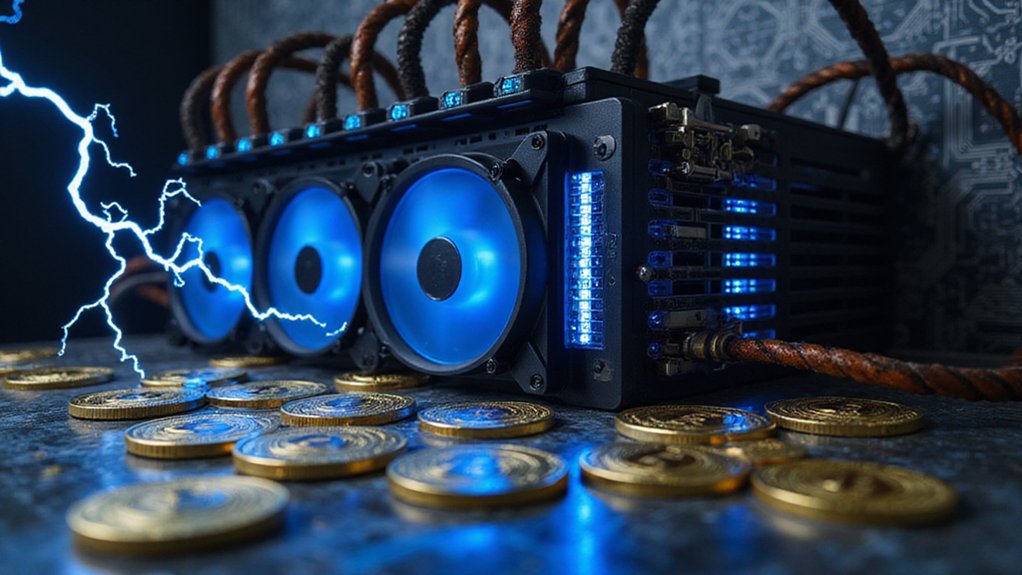Decentralized applications (DApps) represent blockchain’s most audacious assault on traditional software architecture, distributing computational existence across peer-to-peer networks rather than centralized servers. These autonomous entities eliminate single points of failure through cryptographic consensus mechanisms, enabling platforms like Uniswap to process billions in trading volume without corporate oversight. While DApps offer enhanced security and censorship resistance, they grapple with scalability bottlenecks and regulatory uncertainty—challenges that reveal deeper transformations reshaping digital infrastructure entirely.

While traditional applications surrender their fate to centralized servers that can vanish with a single executive decision or government decree, decentralized applications (DApps) distribute their existence across blockchain networks and peer-to-peer systems—a architectural philosophy that transforms software from vulnerable digital serfs into resilient, autonomous entities.
These applications operate through open-source code (transparency being both revolutionary and terrifying for traditional tech giants), utilizing cryptographic consensus mechanisms rather than trusting benevolent corporate overlords. The fundamental shift lies in eliminating single points of failure: when Uniswap processes billions in trading volume without a traditional exchange’s bureaucratic machinery, one begins questioning why we ever accepted centralized intermediaries skimming fees like digital toll collectors.
DApps span diverse sectors, from financial protocols like Aave and Compound revolutionizing lending markets to gaming platforms like Upland creating virtual economies with actual ownership stakes. OpenSea‘s NFT marketplace demonstrates how decentralized infrastructure can facilitate entirely new asset classes—though whether digital art deserves billion-dollar valuations remains delightfully contentious. Competing platforms like Magic Eden and Blur have emerged to challenge OpenSea’s dominance in the rapidly evolving NFT marketplace ecosystem.
The architecture delivers compelling advantages: enhanced security through distributed consensus, censorship resistance (governments cannot simply flip switches), and operational transparency that makes traditional corporate black boxes appear quaint. Users receive direct token incentives rather than surrendering data for advertising revenue—a novel concept in our surveillance capitalism epoch. Healthcare DApps enable secure sharing of patient records across providers while maintaining strict privacy controls.
DApps reward users with tokens instead of harvesting their data for corporate profit—a refreshingly subversive economic model.
However, blockchain’s inherent limitations create scalability bottlenecks and transaction costs that can reach absurd heights during network congestion. User interfaces often challenge even technically savvy individuals, while regulatory uncertainty creates compliance nightmares for developers traversing jurisdictional maze-work. Smart contracts require gas fees for execution by validators, with complex operations potentially creating prohibitive deployment costs.
The technology’s evolution toward cross-chain interoperability and improved user experience suggests DApps may transcend their current niche status. Decentralized autonomous organizations (DAOs) represent the logical extension—entire governance structures operating without traditional corporate hierarchies, replacing boardrooms with smart contracts and shareholder meetings with token-weighted voting.
Whether DApps achieve mainstream adoption depends largely on solving the user experience puzzle while maintaining their decentralized ethos. The irony remains striking: technologies designed to eliminate intermediaries often require new intermediaries to bridge complexity gaps, suggesting that true decentralization may be more philosophical aspiration than practical reality.
Frequently Asked Questions
What Are the Main Disadvantages of Using Decentralized Applications?
Decentralized applications suffer from fundamental architectural limitations that would make centralized system architects weep.
Transaction throughput remains painfully constrained by consensus mechanisms, while user experience resembles financial masochism—private key management replacing simple passwords.
Enterprises surrender operational control (imagine that boardroom discussion), regulatory compliance becomes Byzantine, and implementation costs soar beyond reasonable projections.
Energy consumption for proof-of-work systems adds environmental guilt to already substantial technical debt.
How Much Does It Cost to Develop a Decentralized Application?
DApp development costs span an almost comically wide range—from $2,000 for basic applications to $450,000+ for enterprise-level behemoths.
Simple smart contracts typically run $30,000-$60,000, while token-based systems demand $60,000-$150,000.
Specialized industries (healthcare, real estate) naturally command premium pricing, as does incorporating advanced features like staking mechanisms.
The choice between public blockchains with ongoing gas fees versus private networks with hefty upfront costs further complicates budgeting calculations.
Can Decentralized Applications Work Without Internet Connectivity?
Decentralized applications cannot function without internet connectivity, despite the somewhat ironic nomenclature suggesting independence from traditional infrastructure.
These blockchain-dependent systems require constant network access for transaction verification, smart contract execution, and consensus mechanisms.
While some developers explore offline caching solutions, meaningful dApp functionality—particularly financial transactions—remains entirely dependent on internet connectivity for blockchain synchronization and distributed node communication.
Which Programming Languages Are Most Commonly Used for DAPP Development?
Four primary languages dominate dApp development, each serving distinct architectural layers.
Solidity remains the undisputed king for Ethereum smart contracts, while Rust gains traction on Solana and Polkadot networks due to its memory safety guarantees.
Go handles backend infrastructure with characteristic efficiency, and JavaScript (often TypeScript-enhanced) bridges user interfaces with blockchain functionality through Web3 libraries—a technological stack that somehow transforms coffee-fueled coding sessions into immutable financial instruments.
How Do Decentralized Applications Handle Data Privacy and User Information?
DApps handle user data through cryptographic encryption and smart contracts that automatically enforce privacy rules—eliminating the charming human tendency toward unauthorized access.
Users control granular permissions over their information while blockchain stores encrypted “fingerprints” rather than raw personal data.
This distributed approach removes centralized data silos (those irresistible honeypots for hackers) and guarantees immutable records across multiple nodes, creating transparency without sacrificing individual privacy controls.









